Copyright © Trumpington Local History Group, 2014. Updated 3 July 2014.
This is the second part of a history of the Chaucer Road and Latham Road area of Trumpington, partly based on information in Rus In Urbe. Chaucer Road and Latham Road: the History of Two Rural Roads in Cambridge . For an introduction, see Chaucer Road and Latham Road Area .
Colleges had traditionally required their Fellows to remain unmarried, until they were forced from within to rescind the statutes which demanded celibacy. First Gonville & Caius College, then Trinity Hall (persuaded by Henry Fawcett and his friend and biographer Leslie Stephen) gave way in 1860. A Royal Commission freed all Fellows to marry from 1882 and many of them then sought suitable locations on which to build houses of a quality and size befitting their status.
Although unmarried, the first new resident was Reverend Henry Latham of Trinity Hall. His house, Southacre, was built in 1880 in the grounds of the former nursery, at the east end of the road to which he gave his name. Chaucer Road was named after Geoffrey Chaucer, because of the reference in the Reeve’s Tale to the mill in Trumpington. The side roads, Chaucer Close, Southacre Drive and Southacre Close, were added in 1989.
From 1890 to 1914, 17 substantial individual properties were built by tenants, mostly academics, in the two roads. A further three properties were built in the 1920s and 11 in the 1930s. All of them were in accordance with the Pemberton family’s vision and intended character. In 1940, the Pembertons sold freehold reversions for most of the houses to the University, for a mere £29,000.
The houses and Masters’ Lodges, many grand enough to accommodate a full complement of domestic staff, with coach houses and coachman’s cottages, were built, it seems, according to the whims of the tenants. They were in a diverse range of styles, from splendid Victorian Mock Tudor and neo-Georgian to 1930s modern concrete carbuncular.
As well as businessmen and many eminent academics, residents included student princes. In 1888, the young Indian Prince Ranji (Ranjitsinhji Vibhaji, maharaja jam sahib of Navanagar), a renowned batsman who later played for England, lived at 1 Chaucer Road. Fellow undergraduates, unable to pronounce his full name, referred to him as ‘Smith’. In 1919-20, two British princes lived at Southacre House: Prince Albert, who became George VI, and Prince Henry, who became the Duke of Gloucester.
During the Second World War, air-raid shelters were built in many of the gardens and numerous evacuees were taken into the homes. On one occasion, incendiary bombs fell nearby after being jettisoned from German planes.
The entrance to Chaucer Road was made safe from enemy tanks by concrete blocks and a cart. This proved unpopular with drivers who were unfamiliar with the area, with a number of cars and lorries being damaged. From 1940-45, 15 Chaucer Road housed the Cambridge University Air Squadron . In 1948, the squadron moved to 2 Chaucer Road, where it is still based. During the war, drill parades were held in the road, with little traffic in those days. 6 Chaucer Road was a motor licence office.
Continue with the final part of Peter Dawson’s history of the Chaucer Road and Latham Road area of Trumpington.
9 Chaucer Road (Edwinstowe), built in the 1890s. Photo: Andrew Roberts, August 2008.
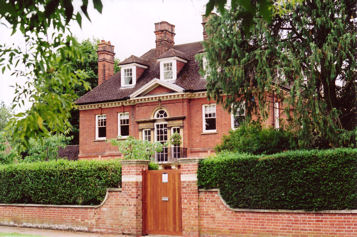
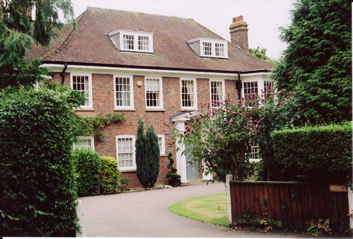
5 Latham Road, built in the 1920s. Photo: Andrew Roberts, August 2008.
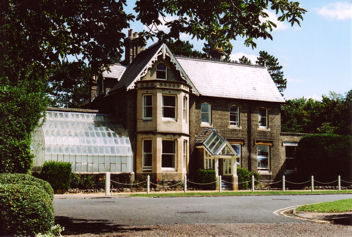
15 Chaucer Road (top) and 2 Chaucer Road (bottom), the locations of the Cambridge University Air Squadron. Photographs: Andrew Roberts, July and August 2008.
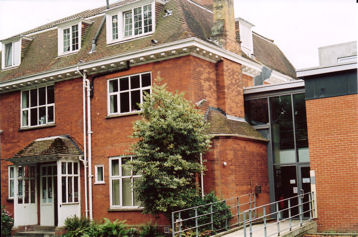
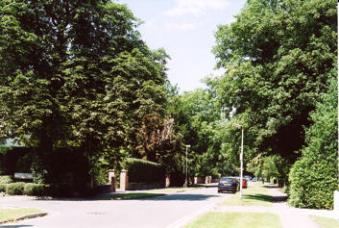
The central part of Chaucer Road. Photo: Andrew Roberts, July 2008.
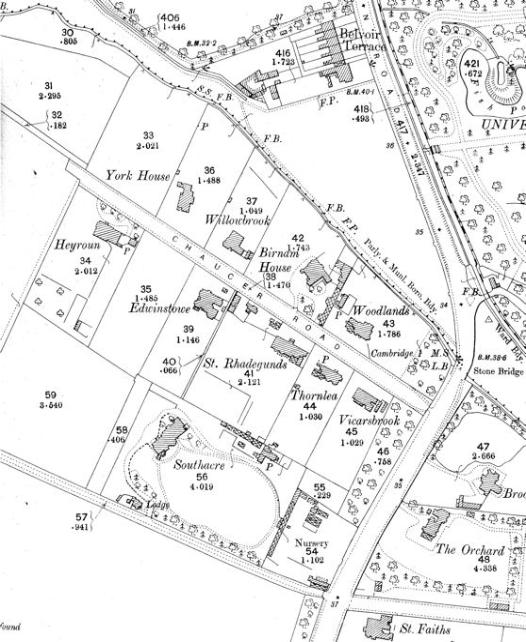
Extract from the Inland Revenue Land Value map for Trumpington, 1910-11 , reproduced by permission of Cambridgeshire Archives, file 470/047, sheet XLVII.10.